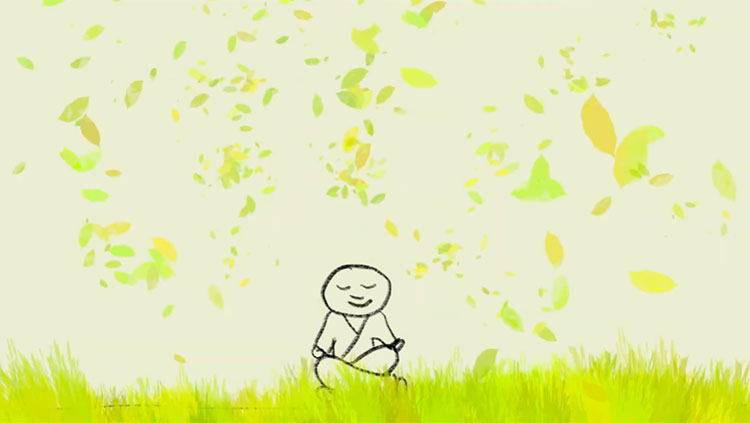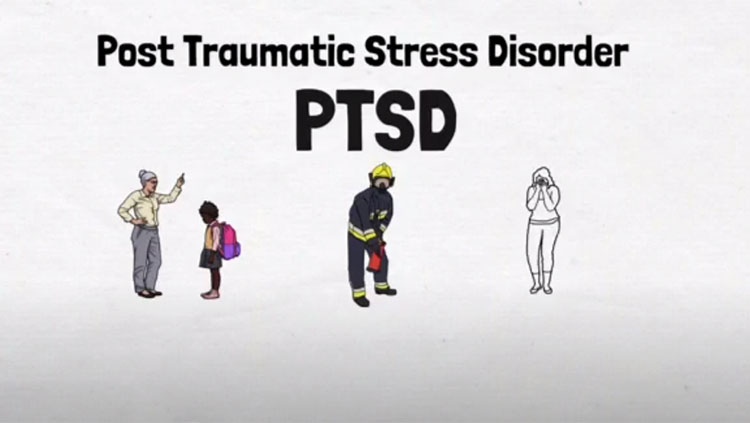Suicide in America
- Published10 Sep 2019
- Author Alexis Wnuk
- Source BrainFacts/SfN
Since 2001, more than 300,000 Americans have been victims of homicide. More than twice as many — 638,467 — died by suicide in that same period.

Art and design by Adrienne Tong. Reporting by Alexis Wnuk.
Additional reporting and editing by Hannah Zuckerman and Juliet M. Beverly.
Created with support from the Stanley Center for Psychiatric Research at Broad Institute.
CONTENTPROVIDEDBY
BrainFacts/SfN
References
Agency for Healthcare Research and Quality. (2016). HCUPnet, Healthcare Cost and Utilization Project. Retrieved from https://hcupnet.ahrq.gov/
Center for Behavioral Health Statistics and Quality. (2018). 2017 National Survey on Drug Use and Health: Detailed Tables. Retrieved from Substance Abuse and Mental Health Services Administration website: https://www.samhsa.gov/data/sites/default/files/cbhsq-reports/NSDUHDetailedTabs2017/NSDUHDetailedTabs2017.htm#lotsect8pe
Health Professional Shortage Areas (HPSAs). (2019, May 7). Retrieved May 7, 2019, from Health Resources & Services Administration website: https://data.hrsa.gov/hdw/tools/DataPortalResults.aspx
Hedegaard, H., Curtin, S. C., & Warner, M. (2018). Suicide Mortality in the United States, 1999-2017 (NCHS Data Brief No. No. 330). Retrieved from National Center for Health Statistics website: https://www.cdc.gov/nchs/products/databriefs/db330.htm
Institute for Health Metrics and Evaluation. (2018). Global Burden of Disease Study 2017. Retrieved from http://ghdx.healthdata.org/gbd-results-tool
Ivey-Stephenson, A. Z. (2017). Suicide Trends Among and Within Urbanization Levels by Sex, Race/Ethnicity, Age Group, and Mechanism of Death—United States, 2001–2015. MMWR. Surveillance Summaries, 66. doi: 10.15585/mmwr.ss6618a1
Jason Flatt Act. (n.d.). Retrieved August 28, 2019, from The Jason Foundation website: http://jasonfoundation.com/about-us/jason-flatt-act/
Kegler, S. R., Stone, D. M., & Holland, K. M. (2017). Trends in Suicide by Level of Urbanization—United States, 1999–2015. MMWR. Morbidity and Mortality Weekly Report, 66(10), 270–273. doi: 10.15585/mmwr.mm6610a2
LegiScan. (n.d.). Retrieved August 28, 2019, from LegiScan website: https://legiscan.com/
Lieberman, R., & Poland, S. (2017). Suicide Prevention Legislation: What School Psychologists Need to Know and Do. Communiqué, 46(3), 8. Retrieved from https://www.nasponline.org/publications/periodicals/communique/issues/volume-46-issue-3/suicide-prevention-legislation-what-school-psychologists-need-to-know-and-do
NCHS Urban-Rural Classification Scheme for Counties. (2017, June 1). Retrieved August 28, 2019, from Centers for Disease Control and Prevention website: https://www.cdc.gov/nchs/data_access/urban_rural.htm
NYC Population: Current and Projected Populations. (n.d.). Retrieved May 23, 2019, from NYC Planning website: https://www1.nyc.gov/site/planning/data-maps/nyc-population/current-future-populations.page
Stone, D., Holland, K., Bartholow, B., Crosby, A., Davis, S., & Wilkins, N. (2017). Preventing Suicide: A Technical Package of Policy, Programs, and Practices (p. 62). Retrieved from National Center for Injury Prevention and Control, Centers for Disease Control and Prevention website: https://www.cdc.gov/violenceprevention/pdf/suicideTechnicalPackage.pdf
Suicide Prevention Resource Center. (2019). State Lifeline Reports: July—December, 2018. Retrieved from https://www.sprc.org/resources-programs/state-lifeline-reports
WISQARS Fatal Injury Data Visualization. (n.d.). Retrieved May 9, 2019, from Centers for Disease Control and Prevention website: https://wisqars-viz.cdc.gov:8006/
WISQARS Fatal Injury Reports. (n.d.). Retrieved April 26, 2019, from Centers for Disease Control and Prevention website: https://webappa.cdc.gov/sasweb/ncipc/mortrate.html
WISQARS Leading Causes of Death Reports. (n.d.). Retrieved April 25, 2019, from Centers for Disease Control and Prevention website: https://webappa.cdc.gov/sasweb/ncipc/leadcause.html


















